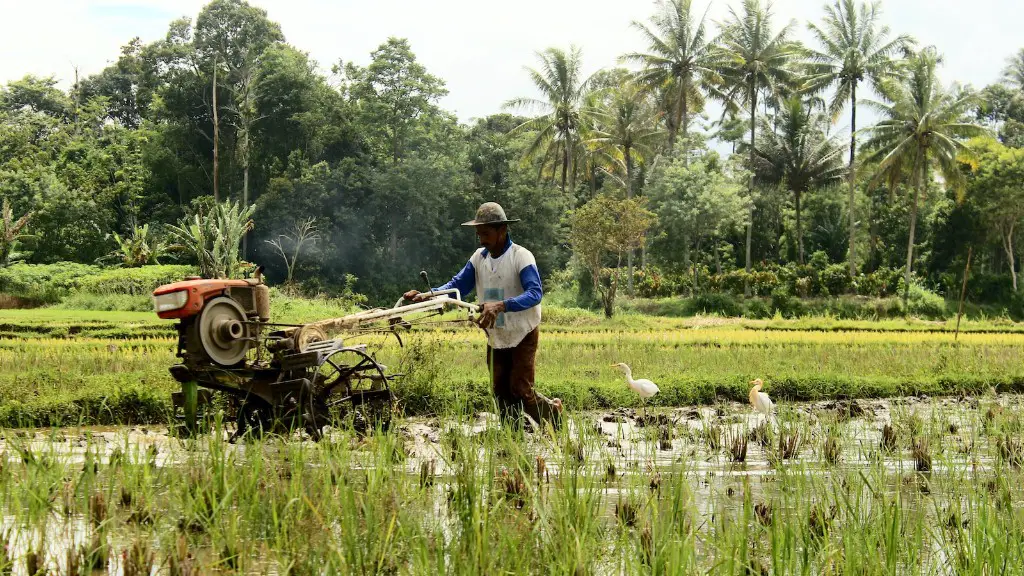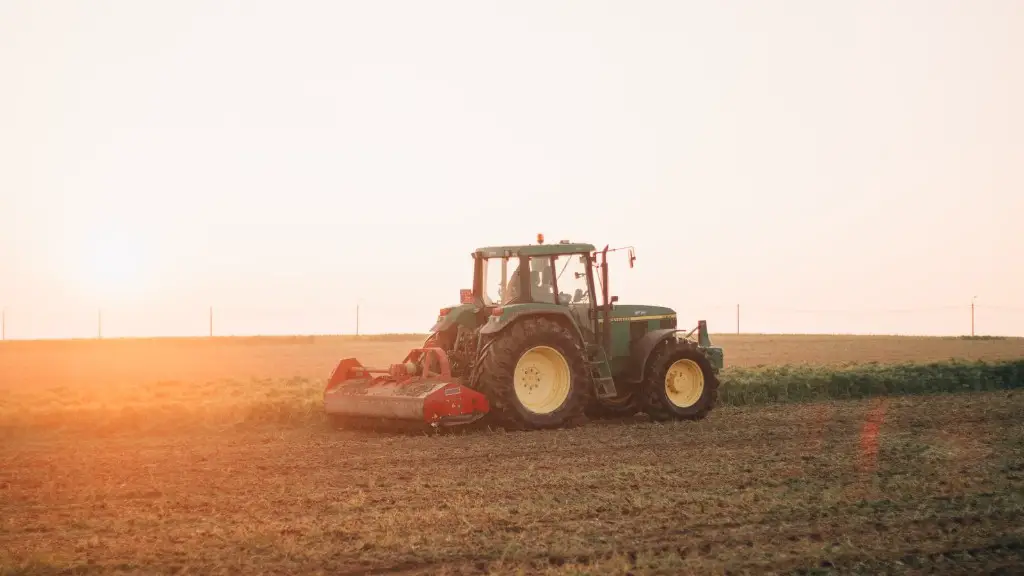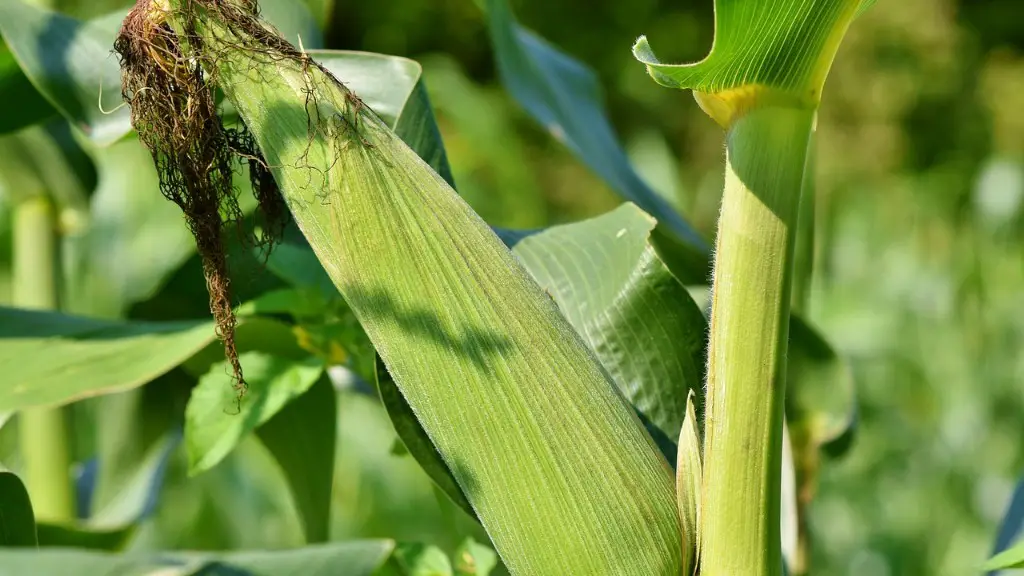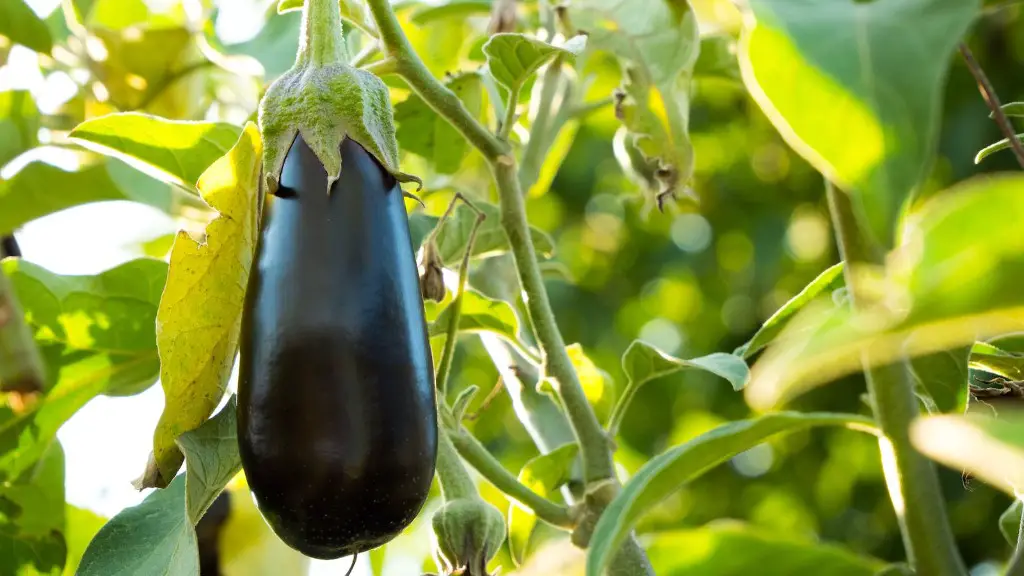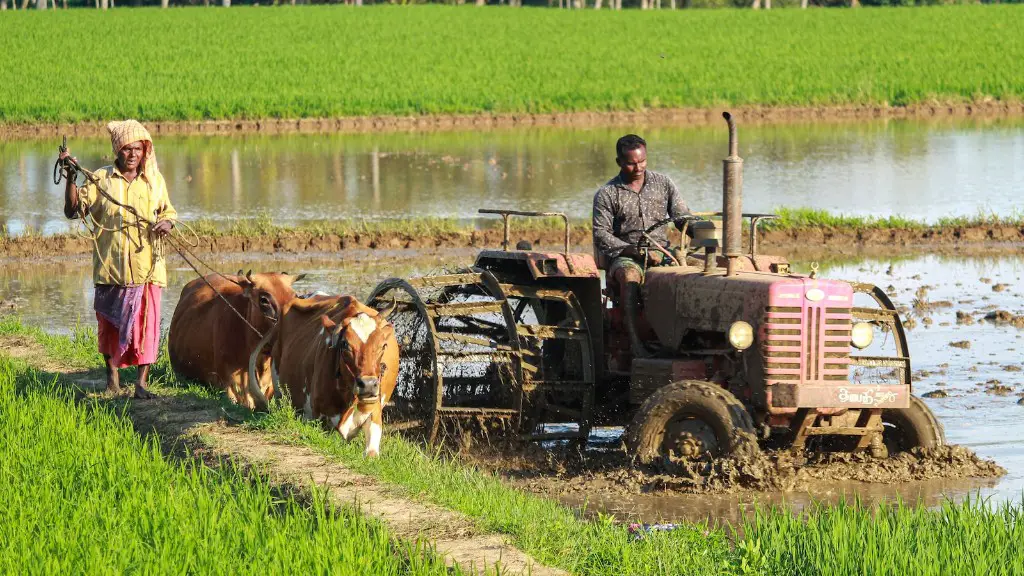Agricultural development has been a major factor in the evolution of human civilization. For centuries, humans have relied on the labor of their hands and the natural resources of their environment in order to produce food. But where did this complex practice of farming and crop cultivation originate?
The earliest evidence of systematic farming and crop cultivation has been found in the Middle East, stretching from present-day Turkey to Iran. This region is also home to the oldest known Neolithic village, Çatalhöyük, which dates back to 7000 BC. This ancient site has yielded evidence of cultivation of domesticated crops like wheat, barley, rye and legumes, as well as the domestication of animals like pigs, goats, sheep and cows.
Archaeological and genetic evidence suggests that these feats of cultivation were not accidental; rather, they show signs of deliberate planning and forethought. These practices would have required knowledge of which plants could be eaten or used for other purposes, and the ability to propagate them on a large scale. The earliest settlers of the Middle East were likely quite adept at such activities.
By the same token, knowledge of animal husbandry was also likely developed in this region. By domesticating animals, early farmers were able to increase the efficiency of their production by producing more food with less effort. This kind of agricultural knowledge likely spread from the Middle East to other parts of the world, slowly but steadily.
Today, farming is a large industry that continues to produce a significant portion of the world’s food supply. This complex practice has its roots in the ancient Middle East, showing the importance of this part of the world in the development of agriculture as we know it today.
Ancient Farming Techniques
The ancient farmers of the Middle East had to develop creative and efficient techniques in order to cultivate their crops and domesticate their animals. A sophisticated system of terraces and irrigation canals was built in order to aid the irrigation of crops. This allowed the farmers to grow a larger variety of crops on much less arable land.
In addition, the domestic animals of this region were selectively bred over time to produce healthier, more productive animals that could provide more milk, wool and labor. This process of selective breeding was undoubtedly a complex and delicate one, requiring careful observation of the animals’ characteristics and traits. The methods used to manage these animals and crops were likely passed down from one generation to the next, slowly leading to the development of more sophisticated agricultural practices.
Animal husbandry and crop cultivation were likely shaped by the environment of the Middle East as well. The hot and dry climate of this region meant that the crops grown needed to be resilient and drought-resistant. This forced the ancient farmers to be precise and precise in the selection of their crops, as well as developing effective irrigation and pest control systems.
Furthermore, the highly varied terrain of the Middle East would have provided a rich range of environmental conditions and ecological niches in which to develop different varieties of crops. This diversity of crops would have provided a source of resilience and hardiness, allowing early farmers to develop hardier and more productive plants over time.
Although the precise origins of agriculture are still debated, the region of the Middle East is generally held to be the birthplace of the first systematic and successful farming practices. The development of these sophisticated farming practices likely had a profound effect on the evolution of human society, providing the necessary nutrient sources for the growth of civilizations.
Crops Cultivated in the Middle East
The Middle East was home to a variety of crops in antiquity. The first crops were likely those that were adapted to the warm and dry climate of this region, such as wheat, barley, rye and legumes. As agriculture increased in complexity, other more delicate crops were also introduced and cultivated, such as cotton, olives and grapes.
The varied terrain of the Middle East also provided a great diversity of conditions in which to cultivate different plants. This allowed for the development of specialized crops adapted to specific climates, soils and ecosystems. This phenonmenon has been seen across the Middle East, where plants that are not normally found in this region were introduced through the practice of agriculture.
Finally, the introduction of irrigation and terracing allowed Middle Eastern farmers to cultivate crops in unsuitable terrain, such as on hillsides and in dry, sandy areas where water was scarce. This allowed for the production of crops on much smaller plots, resulting in higher yields and increased efficiency.
The Middle East has thus been a major center of crop cultivation throughout history. The introduction of agricultural techniques and the development of crop varieties have had a massive impact on the global food supply, which continues to be shaped by this region’s past accomplishments.
The Spread of Agriculture
Agriculture is believed to have originated in the Middle East and then spread outward, in part due to the mobility of people and the circulation of ideas. The spread of agriculture was a gradual process, with the cultivation of plants and domestication of animals slowly reaching more isolated parts of the world.
The presence of the so-called Fertile Crescent, stretching from Egypt to Mesopotamia, was a major factor in the spread of agriculture beyond the Middle East. This region served as a kind of bridge between the east and west, with traders and settlers carrying with them the knowledge of farming practices that had been developed in the Middle East.
Agriculture’s influence extended beyond the Fertile Crescent. By the Bronze Age, agricultural practices had spread to Europe and Asia, allowing civilizations to flourish in both regions. In the Americas, agriculture was introduced with the arrival of European settlers, which had a profound impact on the native peoples.
Finally, migration has been key in transmitting knowledge of farming practices. Over time, people have moved from the Middle East to other parts of the world in search of new opportunities, taking with them the knowledge of agriculture.
Agriculture is thus a technology that has spread far and wide throughout the world. Its origins lie in the Middle East, where its development laid the foundation for a more stable and productive way of life.
The Impact of Agriculture on Society
Agriculture has had an enormous impact on the development of human societies. It allowed the transition from nomadic hunter-gatherers to a more sedentary lifestyle, forming the basis of the modern economy. Not only did agriculture provide more reliable nutrition, but it allowed for the development of technologies, art, government and industry.
Agriculture has also been a major contributor to population growth, as more reliable food sources allowed for the growth of larger and denser populations. This in turn fostered the development of cities and states, providing the necessary infrastructure and population for the establishment of civilizations.
The introduction of agriculture has revolutionized human life on a number of levels. Increased control over our food supply has allowed us to control our environment, allowing us to modify our surroundings to suit our needs. This has allowed us to expand into more diverse and difficult environments, shaping the face of the planet in the process.
More recently, the introduction of scientific and technological advances has revolutionized the practice of agriculture. Today, farmers are able to produce higher yields with less labor, due to mechanization and the use of synthetic fertilizers and pesticides.
Agriculture has had a profound effect on human societies since its development in the Middle East millennia ago. Its influence has been felt in virtually every corner of the globe and its impact on human history is undeniable.
Modern Agricultural Practices
Despite its ancient origins, the practice of agriculture remains as important as ever. In recent years, there has been an increased focus on sustainability in agricultural practices. This has led to an emphasis on methods that are more efficient and less damaging to the environment.
The use of GMOs (genetically modified organisms) is a controversial subject, but has been increasingly adopted in recent years. This technology is used to modify food crops to yield higher yields and be more resilient to pests and environmental stresses. Although it remains highly controversial, it has been a major factor in the increased efficiency of modern agriculture.
Organic agriculture is a growing field that focuses on sustainability and the use of natural processes to increase crop yields. This approach has been adopted by both large-scale growers and individual farmers, allowing them to produce food without the use of pesticides, synthetic fertilizers and other chemicals.
Finally, there has been an increased focus on reducing food waste in recent years. This has led to more efficient processing and packaging techniques, as well as initiatives that look to reduce the amount of food that is lost or discarded.
Agricultural practices continue to evolve and innovate in order to meet the needs of a global population. The development of sustainable and efficient agricultural techniques will be key in ensuring that the global food supply is able to meet the needs of its growing population.
